Hello people 👋🏾 I apologise for my silence. I took a break in January and planned to be back in February, but life reminded me how masterfully it can turn plans on their heads and batter you in the process for forgetting this. But I’m back now! How have you been??

I.
For the first decade of my life, I had what Nigerians used to call virgin hair: natural hair that had never been touched by relaxer. At first, I barely gave my hair any thought; it was my mother’s problem, not mine. But when I was around six or seven years old, I noticed something. When my hair wasn’t in a protective style, it always sat atop my head in a puff or two puffs, unlike some girls I saw who tied their hair at the nape of their necks in a low bun. For some reason, I really wanted to do the same. But whenever I attempted to, my hair wouldn’t cooperate. The strands refused to stay together all the way to the back of my neck. The hair at the top of my head would puff up as if in defiance, refusing to be bound by the hair tie I used. I’d watch the other girls with their slick, laid down hair and hate that mine looked constantly awake, alert, never wanting to rest.
The frustration from hair that never laid down stewed in me until after my first term in boarding school. When I got back home, I told my mum I wanted to relax my hair, and she agreed. I still remember the date. It’s etched in my memory: 19th December 2011. I sat in a salon and stared at my reflection. I’m really doing this, I thought as I watched the hairdresser smear the creamy crack on my hair. And I thought, finally.
It felt like I was born anew, and the possibilities were endless. I no longer had to deal with shrinkage. When I braided my hair for school, the ends of the plaits no longer curled, so that I’d have to stretch them out to reveal the ‘true length’ of my hair to my friends.
A couple of months later in school, I met a transfer student who had also relaxed her hair for the first time, and she was as excited as I was. Let’s call her Chinelo. When we met, Chinelo and I clicked like she was a seat belt latch plate and I was the buckle. Our similar hair status was just the cherry on top of our friendship.
Weekends in school—the only time we were allowed to move around with unbraided hair—were a window to flaunt our hair. One Saturday, Chinelo put my hair in a complicated style that showed off its length using several hair accessories. When I left my room, people gushed about my hair, stroking it with a light in their eyes as if it had singlehandedly brought so much joy into their day. I smiled a modest smile that masked the sweeping pride moving through every part of me.
Unfortunately, the euphoria and utopia faded away, and about two years in, for some reason, relaxers weren’t working as well as they usually did for me. When I’d go to braid my hair, the hairdresser would complain that it was due for relaxing even though it hadn’t been up to a week since I last smothered my hair with the creamy crack. Then my hair began breaking, starting from the back. Maybe from the relaxer, the heat I applied with blow-dryers and hair straighteners, or over-manipulation, I don’t know. But it was bad. At the time, it was a thing for girls to put their hair in a small folded bun on top of their heads (oh, the fickleness of trends and desires), and my back hair couldn’t take it because it was now half the length of the rest of my hair. When I did it, I always needed bobby pins to hold the strands from the back in place.
I was frustrated and blamed all my problems on relaxers. Coincidentally, Chinelo was tired, too. So, we decided to transition back to natural hair together. I planned to leave my new growth alone and hoped the relaxed strands would eventually fall off. But I hated the mix of short natural hair and long spiky strands of relaxed hair. So one day, I took a pair of scissors, stood in front of the mirror after wetting my hair and snipped off the relaxed pieces as much as I could.
Chinelo and I re-entered the natural hair journey with the same excitement as we did the relaxed one. We were also both reading Americanah by CNA at the time, and Ifemelu, the protagonist, transitioned to natural hair, so it felt like we were going through the journey alongside her. We discovered the afro puff (or pineapple, whatever you call it) and reveled in how easy it was to do. We experimented with the best tool to use to put our hair in a puff, trying strings of clothes and then finally settling on shoelaces as the best option. Castor oil, coconut oil and sheabutter became part of our daily vocabulary. Chinelo even made a song about how much she—and everyone else in the world—loved coconut oil.
One time, we decided to apply shea butter to our hair daily, thinking it’d trigger growth. We did it religiously because we were eager to leave the phase where our plaits didn’t touch our necks. But Chinelo loosened her braids before mine, and we discovered all it triggered was breakage and accumulated dirt. I quickly aborted mission to avoid the same fate.
II.
Over the next few years, I spent a lot of time on natural hair blogs. I read about the LOC (liquid—oil—cream) method vs the LCO (liquid—cream—oil) method. I learned about hair type and hair porosity and that you need to identify when your hair needs protein versus when it needs hydration from deep conditioning. I received so many product recommendations that declared themselves the best for natural hair. I even read the Cantu conspiracy theories. There was so much—sometimes conflicting—advice to consume.
Eventually, I found a routine that catered to my abilities and pockets. My leave-in conditioner, spray bottle, and wide-toothed comb were my soldiers ready to moisturise and detangle. My coconut oil and shea butter were at attention, ready to lock in the moisture. I grew to love caring for my hair. Wash days were like quality time where we had intimate conversations, and although styling my hair using inspiration from Pinterest and Youtube was gruesome (my arms always ached, and 80% of the time, the style didn’t turn out right), I still found myself enjoying the process.
When I graduated from secondary school and started university, this marked a crucial point in my hair journey: I was finally leaving behind secondary school-mandated hairstyles that prohibited the use of any form of added hair. Up till this point in my life, aside from during holidays, all my hair had known was different styles of attachment-free cornrows—all back yesterday, shadé today, two steps tomorrow, shuku next week, baby face occasionally. I excitedly waved them away, making space for more ‘adult’ hairstyles that used braid extensions and weaves.
During my four years of uni, I mostly made braids I carried around for months. I attended one of those Nigerian faith-based universities that are popularly referred to as glorified secondary schools because of their inane restrictions. One of these many rules was that we weren’t allowed to have coloured hair. This meant for our braids, we could only use colour 1 braid extensions and if we wanted to be risky, colour 33 (random info: in rebellion to this, after I graduated, I vouched to always use non-black braid extensions and this led me to fall in love with mixing different shades of light and dark brown attachements to get blonde braids. It always gives Beyoncé.)
At a point during my prison sentence of making colour 1 braids, I plunged deeply into the laid edges trend. I was always armed with my preferred edge controller: Eco-styling gel, and I didn’t leave my room without laying my edges. I watched YouTube tutorials to hone my craft and learned to make perfect swirls and swoops. I don’t lay my edges anymore, but I think my hands still remember the movements.
III.
Now, it feels like I’ve almost entirely shed off my previous inclinations, desires and beliefs about hair. I’m obviously no longer obsessed with putting my hair in a low bun (though I’ve learned to do it on my natural hair without gel and little me is so proud), I don’t preoccupy myself with finding the perfect hair routine using information from the internet as my guide, and I’m unlearning the belief that any hairstyle without added hair is ‘childish’ or ‘unserious’.
The online advice I used to gobble up was enlightening at first but then turned overwhelming and confusing. So, I decided to trust my hair to let me know what works for me. Currently, my haircare collection consists of water, leave-in conditioner, deep conditioner, oil and shea butter, and they’ve been working fine for me. I also recently decided to use most of these products in moderation. Usually, when I’m putting my hair in twists to let it air-dry after washing and conditioning, as I wrap the chunks of hair around each other in a twisting motion, a liquefied mix of leave-in conditioner, shea butter, and oil dribbles out. Then it clicked: I just washed my hair and am now putting large amounts of products on it. Isn’t that counterproductive? Maybe I don’t need to apply them as generously as the directions suggest.
I simply outgrew laying my edges. One day, the desire was there, fixed and all-consuming. Then, over time, it oozed out of me. When I questioned the reason I did it so religiously, I discovered that I felt incomplete without laid edges and believed hair—whether edges or the whole head of hair—had to be sleek to be neat or beautiful. This is ironic, as natural hair is typically unsleek. I’m trying to unlearn this (colonial) belief and view my hair and edges in their unaltered form, free of sleeking products, as worthy and beautiful.
Lastly, by some means, I have fallen deeply and utterly in love with the no-added hair hairstyles I bid farewell to after secondary school. When I take my early morning walks, I notice the all-back on the head of the man jogging past me, I see the shuku on the head of a primary school student, and I internally scream because of how pretty it is. I’m suddenly very aware of the beauty of cornrows without added hair. Now, when I do them, I love how the ends of the plaits curl on their own volition. I like it when I stretch them to see the full length of my hair, and they bounce back, curling in on themselves once again, as I release them.
My besottedness with cornrows free from added hair has made me question the beliefs I formerly held about them, which society conditioned me to have. I viewed them as childish—styles meant for little girls or basic and secondary school kids—and believed when women wore them, it was to cover it with a wig. It’s common to walk into a salon in Nigeria to get an all-back done, and the hairdresser does a sub-par job because they assume you’ll be wearing a wig. Why can’t I just want pretty all-back on my hair that I want to live life with?
Weaves, wigs, braids and plaits with added hair are the norm for women in Nigeria, so much so that we can’t imagine a woman existing and functioning in social spaces with hairstyles that oppose this norm. If we see a woman with cornrows without added hair at work, at a wedding, a seminar, etc, we either assume they are members of a church that prohibits them from using any form of hair extensions or we view them as childish, underdressed, or just weird. Thankfully, twists with your natural hair are becoming common in professional and social spaces. But I know women with shorter hair are discouraged from doing them because we are a society obsessed with hair length.
All of this has made me think of how we’ve demoted our hairstyles—African hairstyles, in general. We believe they are unprofessional, plain, ugly, or weird. I remember how in my secondary school, it was normal for final-year girls to make traditional threading hairstyles (thread) to induce hair growth. But making this hairstyle for anything outside this reason was weird. I made thread in primary school but avoided them after that. During one of my secondary school holidays, my mum made it for me, and I was acutely embarrassed to take it out. I wanted to cover it with a scarf, a hat, anything! I was afraid of being perceived as razz, a local village girl. Now, I see the hairstyle from a different perspective. Apart from it being an effective and heat-free method to stretch your hair, it is also so creative, unique and beautiful.
I realise I’ve turned this piece about my hair journey into a rant about how we view African hairstyles as a society, but the realisation of how deeply entrenched colo(nial) mentality is that it seeps into how we perceive our hair and hairstyles is part of my journey. It was why, as a child, I wanted my hair to ‘lay down’, the reason for my brief obsession with laying my edges and my eagerness for ‘adult’ hairstyles that added length to my hair. Nevertheless, I’m proud of my growth, the beliefs I’ve left behind, and my relationship with my hair today, even if I still struggle with shrinkage and successfully doing those hairstyles from Pinterest.
Thank you so much for reading! Here’s a bonus: I made a Pinterest board for this essay because, why not? It has pictures and some videos of cornrow and thread hairstyles I liked and felt aligned with the vibe of this piece. Check it out if you’re interested.
❁ What is your relationship with your hair like? How has it evolved? If you have any thoughts, you can leave them in the comments or reply privately to this email.
Have a wonderful rest of the (WOMEN’S HISTORY!!!) month. Be kind to yourself, be kind to others, and be kind to women.


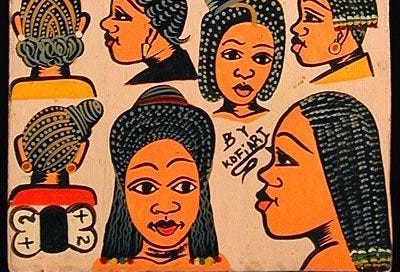



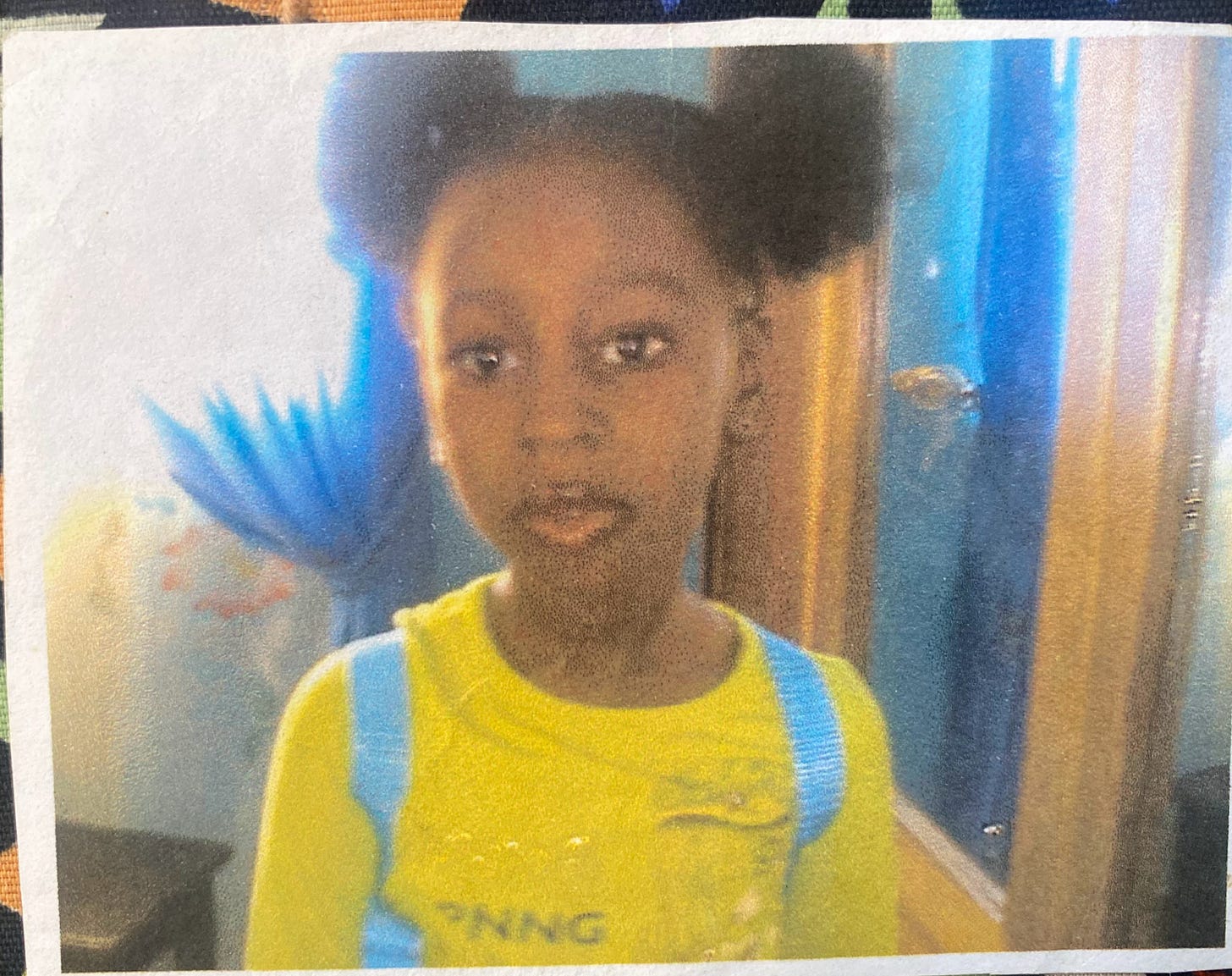
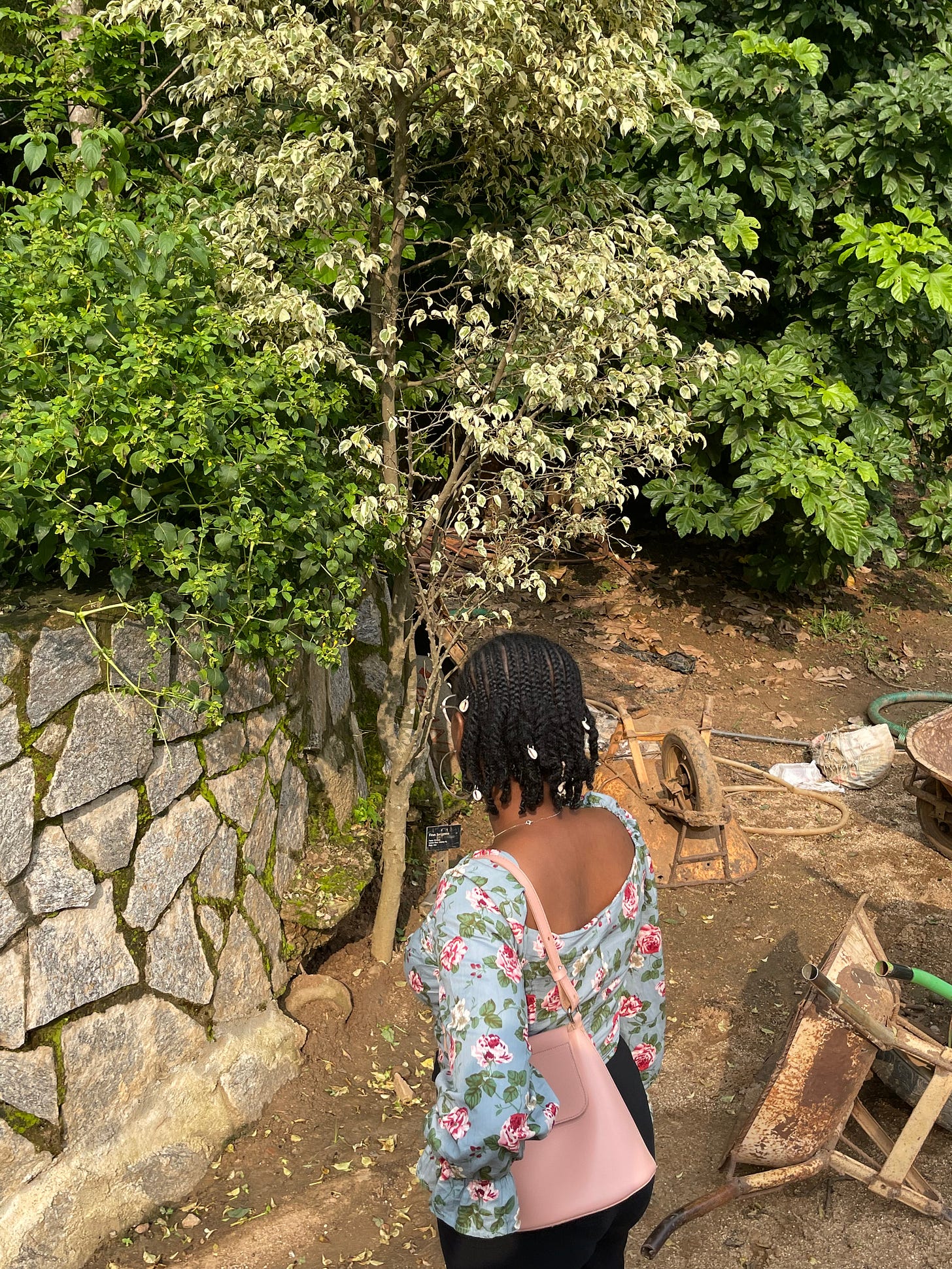
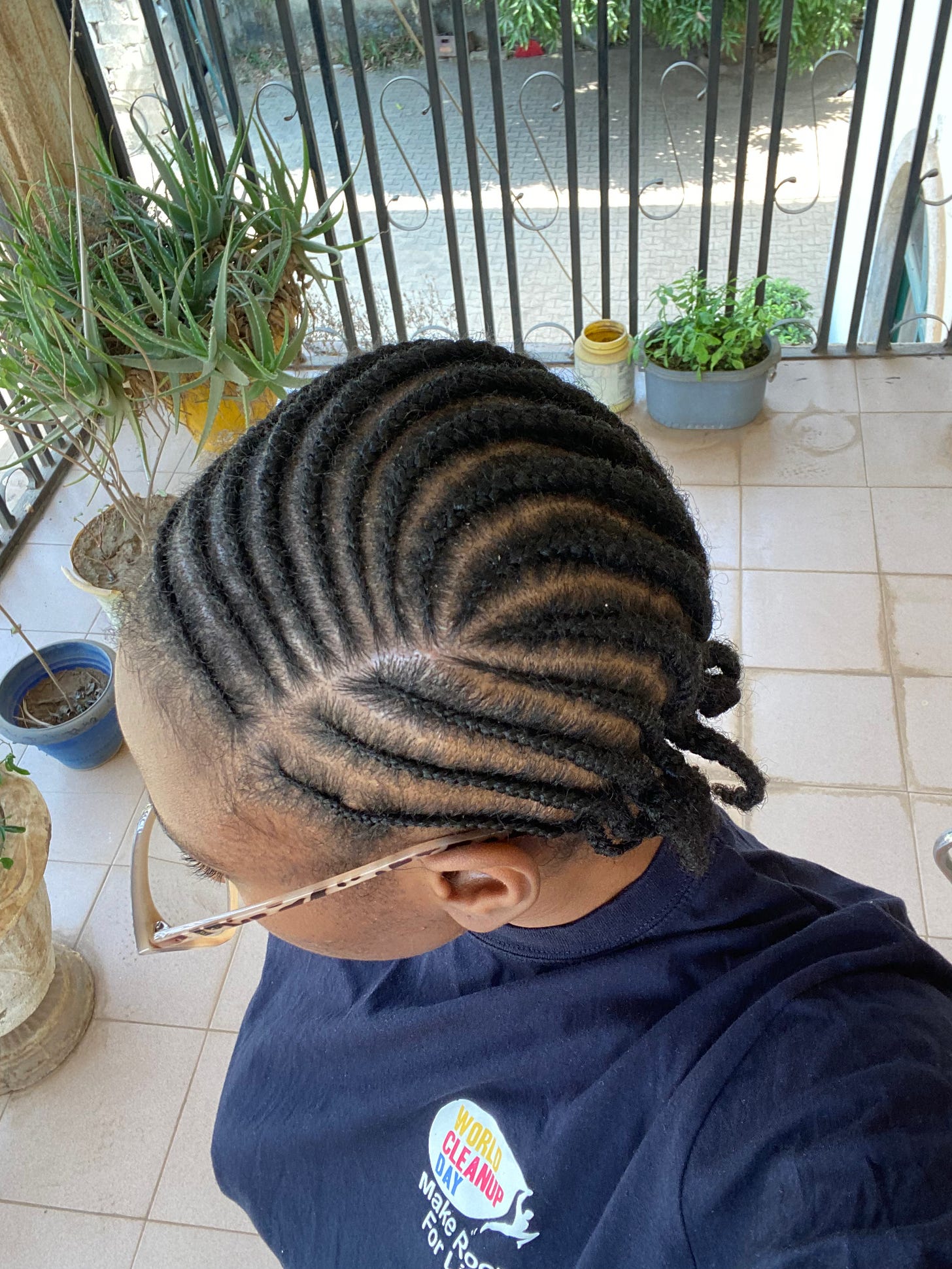
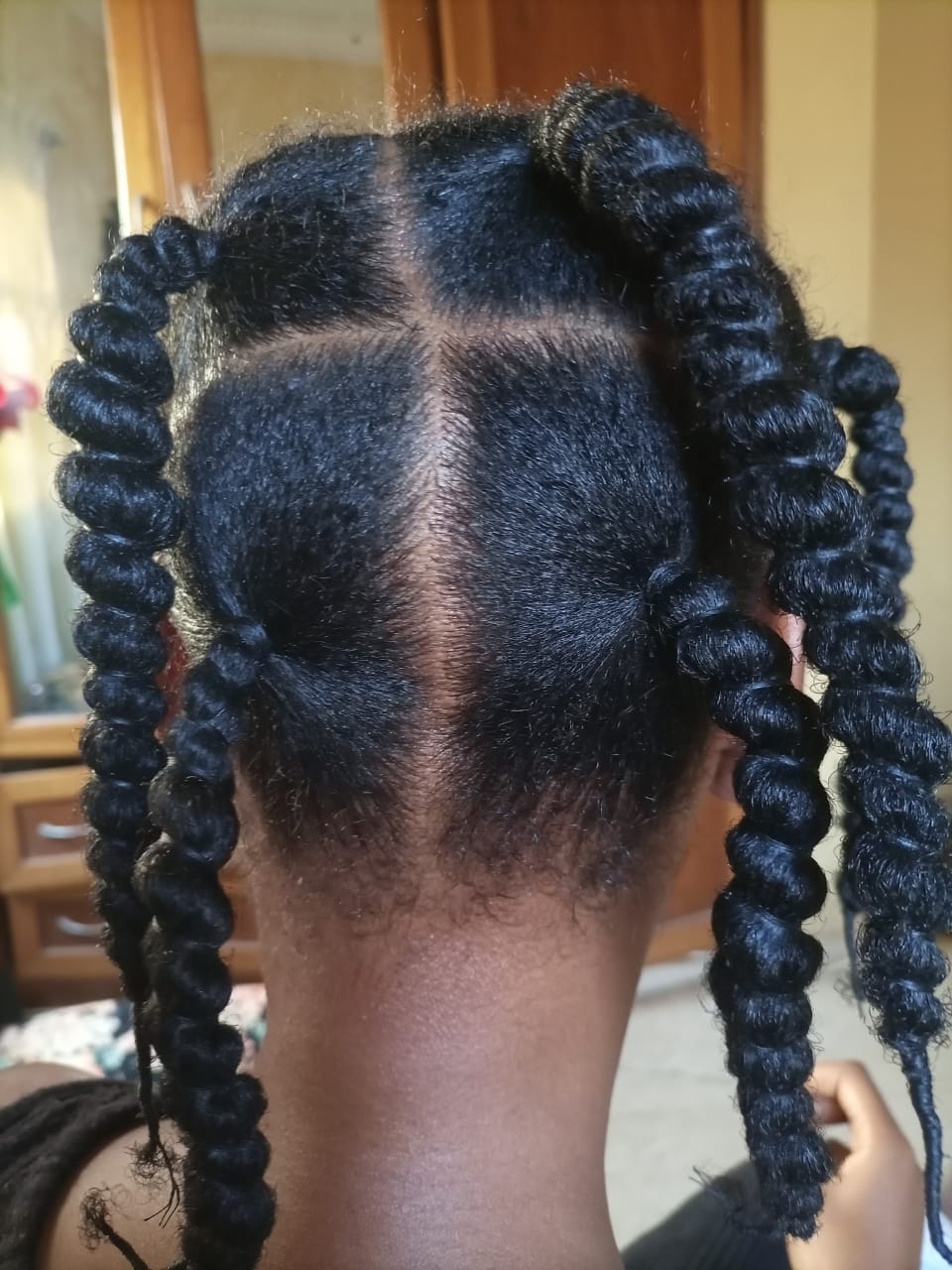

That Pinterest board is stunning. Thank you for sharing your hair journey and reminding me of the beauty that is natural black hair 🖤
I have a love hate relationship with my hair, evey other day I want to cut cause it's not growing out properly and because of how society is obsessed with hair length, I face constant comparison from my friend about whose hair is longer and it irritates me. I'm not in love with my natural hair and sometimes cutting it of is because I can't not braid it how I want and can't afford a wig. I might cut my hair, it's a mid life crisis thing